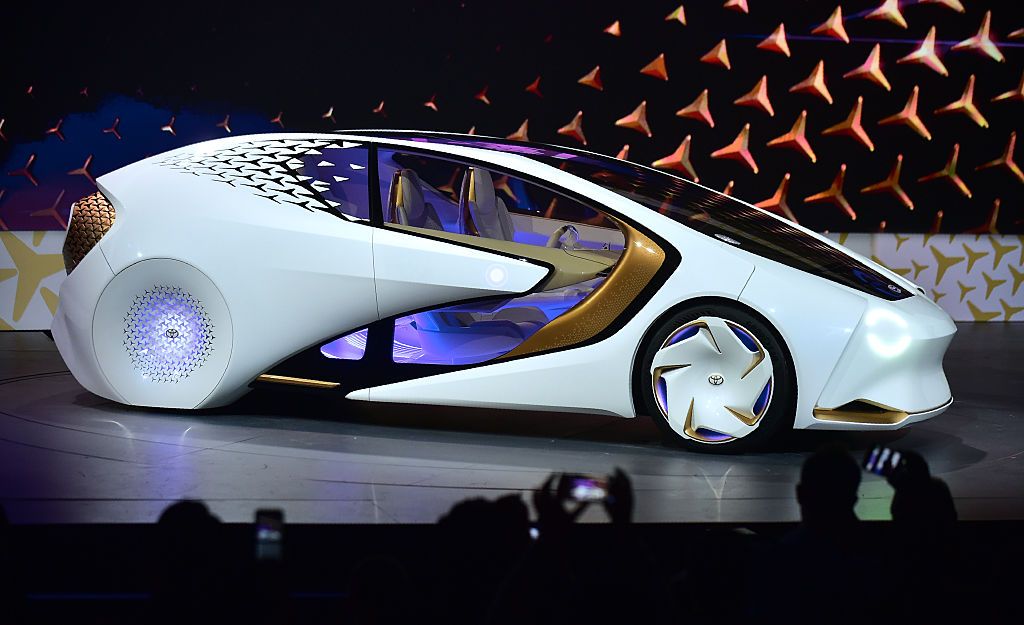A famous (for us car buffs) stylist was Virgil Exner (1909-1973), who headed Chrysler design in the 1950s. He also was controversial. Raymond Loewy regarded him as a kind of traitor with respect to his role in the design process for the radical 1947 Studebaker line. There was styling controversy in the late 1950s when the shapes of Chrysler Corporation cars' tail fins became unjustifiably baroque and other details seemed odd.
Nevertheless, Exner was a talented artist who illustrated Studebaker advertisements in the early 1930s and created some outstanding automobile designs in the years 1945-1955 or thereabouts.
One such design was that of Chrysler's first major postwar concept car, the K-310. Exner had been brought into Chrysler Corporation, but wasn't yet in charge of styling. He worked on some projects more or less on his own at first, one of which was the K-310.
At the time it was designed -- about 1950 -- Exner was infatuated by coachbuilt Italian automobiles being created during what I consider the Golden Age of Italian styling. His K-310 was a large car, sitting on a Chrysler chassis and powered by the corporation's new "hemi" V-8 motor. With management approval, construction of the K-310 was farmed out to Italy's Ghia firm, which did an excellent job.
The K-310 was revealed to the public 2 November 1951, about ten months after General Motors' futuristic LeSabre was introduced in a Life magazine article. These initial postwar dream cars were conceptual opposites. The LeSabre was intended to predict future automobile features, whereas the K-310 presented an alternative to current American car designs. The LeSabre proved to be more famous and influential.
That said, the K-310 was the better design. That's because it was a practical car with better-coordinated detailing than the LeSabre's low, two-passenger collection of somewhat unrelated details.
A widely-used publicity photo of the K-310.
Frontal styling was a reprise of 1930s design elements. The grille differed from the wide 1950 American style featuring bold, sculpted chromed bars. Headlights were placed far from the body sides, normal positioning until the very late '30s. Covered by the bumper was something that might resemble a starter crank cover.
Although the K-310 was large, its styling wasn't ponderous. The tapered hood-grille ensemble and catwalks with hooded headlight assemblies helped lighten the design.
Some affectations included the spare tire cover design on the trunk lid and the "gunsight" tail lights. I like the tail lights, but consider the trunk decoration unnecessary.
The passenger compartment "greenhouse" was nicely done, following the hardtop convertible practice initiated by GM for 1949. However, the K-310 lacked the hardtop's B-pillars and roll-down windows abaft of the door windows.
A famous (for us car buffs) stylist was Virgil Exner (1909-1973), who headed Chrysler design in the 1950s. He also was controversial. Raymond Loewy regarded him as a kind of traitor with respect to his role in the design process for the radical 1947 Studebaker line. There was styling controversy in the late 1950s when the shapes of Chrysler Corporation cars' tail fins became unjustifiably baroque and other details seemed odd.
Nevertheless, Exner was a talented artist who illustrated Studebaker advertisements in the early 1930s and created some outstanding automobile designs in the years 1945-1955 or thereabouts.
One such design was that of Chrysler's first major postwar concept car, the K-310. Exner had been brought into Chrysler Corporation, but wasn't yet in charge of styling. He worked on some projects more or less on his own at first, one of which was the K-310.
At the time it was designed -- about 1950 -- Exner was infatuated by coachbuilt Italian automobiles being created during what I consider the Golden Age of Italian styling. His K-310 was a large car, sitting on a Chrysler chassis and powered by the corporation's new "hemi" V-8 motor. With management approval, construction of the K-310 was farmed out to Italy's Ghia firm, which did an excellent job.
The K-310 was revealed to the public 2 November 1951, about ten months after General Motors' futuristic LeSabre was introduced in a Life magazine article. These initial postwar dream cars were conceptual opposites. The LeSabre was intended to predict future automobile features, whereas the K-310 presented an alternative to current American car designs. The LeSabre proved to be more famous and influential.
That said, the K-310 was the better design. That's because it was a practical car with better-coordinated detailing than the LeSabre's low, two-passenger collection of somewhat unrelated details.
A widely-used publicity photo of the K-310.
Frontal styling was a reprise of 1930s design elements. The grille differed from the wide 1950 American style featuring bold, sculpted chromed bars. Headlights were placed far from the body sides, normal positioning until the very late '30s. Covered by the bumper was something that might resemble a starter crank cover.
Although the K-310 was large, its styling wasn't ponderous. The tapered hood-grille ensemble and catwalks with hooded headlight assemblies helped lighten the design.
Some affectations included the spare tire cover design on the trunk lid and the "gunsight" tail lights. I like the tail lights, but consider the trunk decoration unnecessary.
The passenger compartment "greenhouse" was nicely done, following the hardtop convertible practice initiated by GM for 1949. However, the K-310 lacked the hardtop's B-pillars and roll-down windows abaft of the door windows.

















EmoticonEmoticon